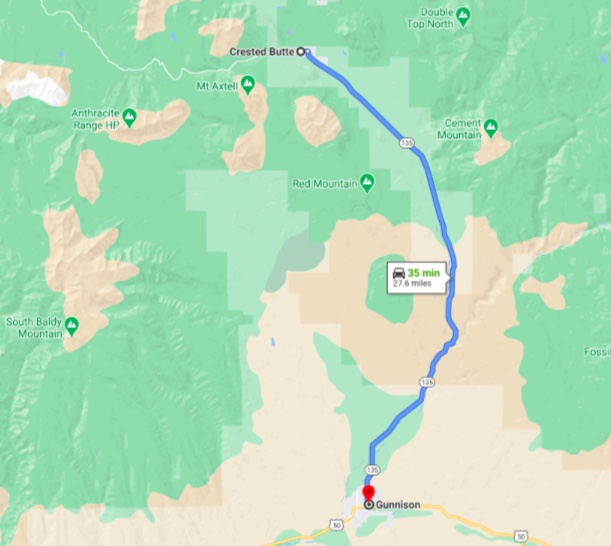
Saturday, October 3, 2020
We had read quite a few comments regarding the Gunnison KOA RV park. Quite a few people commented on the barnyard animals, i.e. pigs, goats, donkeys, cows, that wander unfettered within the park and many were put off by it. Well shucks, that’s right up our alley!
Turns out all animals are corraled except the goats- they wander unfettered. Of course our Boxer Boy is enamored with all of those animals and will stare at them incessantly. He’s gone nose to nose with the pigs and donkeys and none of them seem to mind. Another plus for this RV park is that the sites are spacious and there’s lot’s of green grass.
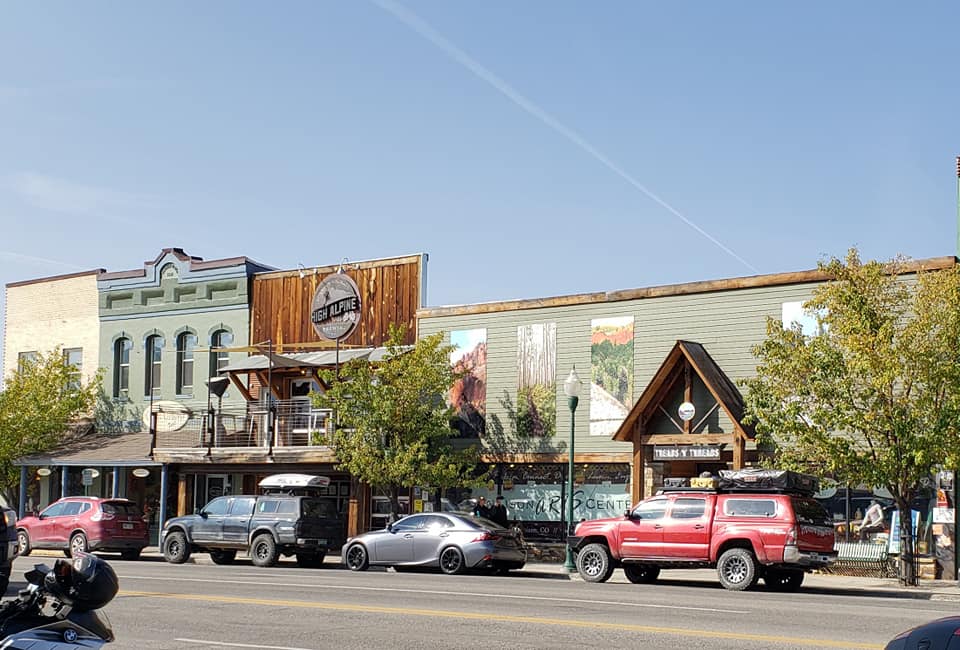
Gunnison (6000 souls) is named after John Gunnison, a fella who visited the area while searching for a route for the transcontinental railroad. Population of the town increased in the 1870’s due to a mining surge throughout the state. The railroad arrived in 1880, making miners, ranchers and farmers very happy.
In the early 1800’s first Europeans arrived in the area most being fur trappers and mountain men. By the 1840’s fur trade dwindled and by the 1850’s gold mining was the vogue. All this activity upset the Ute’s and they killed some miners causing some of them to flee. An increase of people in the 1870’s saw more miners as well as ranchers and farmers which ultimately forced the Ute people out of the area. A total of 130,000 ounces of gold were produced from the beginning of the gold rush until 1959.
The farmers who settled in the area found out the hard way that the area wasn’t good for that trade. With not enough rain and a short growing season due to the high elevation (7703′) farmers turned to ranching. But to do so was not so easy. They had to clear land and cut irrigation ditches in order to grow hay for horses and cattle- practices still in use today. Around 1875 the brothers Outcalt homesteaded land three miles north of Gunnison then built the irrigation system for it and began growing hay and various grains.
The enterprising brothers were able to convince the railroad to run a spur to their ranch. They named the stop Hay Spur, from which they shipped over 800 carloads of hay a year. Hay as well as carloads of potatoes and other vegetables were sent to Crested Butte, helping to feed the miners and their mules.
Gunnison lies at the bottom of several valleys and all roads leading to it go over fairly high passes. Due to its location in the Rocky Mountains, cold air in all the valleys settles into Gunnison at night, making it one of the coldest places in winter in the United States, especially when snowpack is present. There’s no snowpack while we visit Gunnison but it’s still cold in the morning- 26 degrees cold.
We spent some time in town walking the old business district. The town caters to young and older folks alike. One restaurant which serves breakfast had 12 people milling about on the sidewalk waiting for their order as outdoor seating is still allowed but not indoor. All had their masks on but non were social distanceing.
Up on a hill a little ways outside of town is a huge “W”. Hey, Gunnison starts with a “G”- what gives? Well, Gunnison is home to the first university in Colorado west of the Rockies, Western Colorado University, established in 1901.

Crested Butte is about 28 miles north of Gunnison. It’s a former coal mining town a sees itself as “the last great Colorado ski town”. In the 1860’s and 1870’s coal and silver mines began to open. As silver mines played out Crested Butte was in a good position to survive because it served as a supply town to the surrounding area. Ranching also helped carry the day. Once the coal mines closed the town began to shrink, the high school closed and the kids had to travel to Gunnison’s high school. The town did not revive until a ski area was built on Crested Butte Mountain. The town’s school system was not fully revived until 1997.

Several attempts to establish a molybdenum on nearby Mt. Emmons were beat back by W. Mitchell, then Mayor. The High Country Citizen’s Alliance was formed in 1977 which is dedicated to protecting natural resources within the Upper Gunnison Valley.

Crested Butte offers plenty of summer outdoor activities- rock climbing, hiking, mountain biking, backpacking and white water rafting come to mind. And don’t forget about fishing! However its more known for winter activities- skiing, snowboarding and cross country skiing in the surrounding mountains is among the best in Colorado. The town also has an ice skating rink.
We have never taken a liking to crowd and downtown Crested Butte has squeezed its roadway down to one lane to allow outdoor seating in the street. We opt to take one pass through via auto and leave. We did get a chance to walk around in more calm parts of town.
We also drove up the partially paved Kebler Pass Road to the summit to get a good look at the golden fall leaves of the Aspen trees. Two mining towns, Ruby and Irwin were established close to the pass in 1879 but both communities ceased to exist after 1885. All that remais is the small cemetery Old Irwin Cemetery that is located at the summit. Graves date back from the 1800’s pioneer days to fairly recent although not many markers remain from the old days.
We head back to camp after enjoying the beautiful Crested Butte area. After all, our donkeys, goats, sheep, pigs and the very large cow are waiting for us.
We head out tomorrow. We’ll let you know where in the next edition of this blog. Adios!
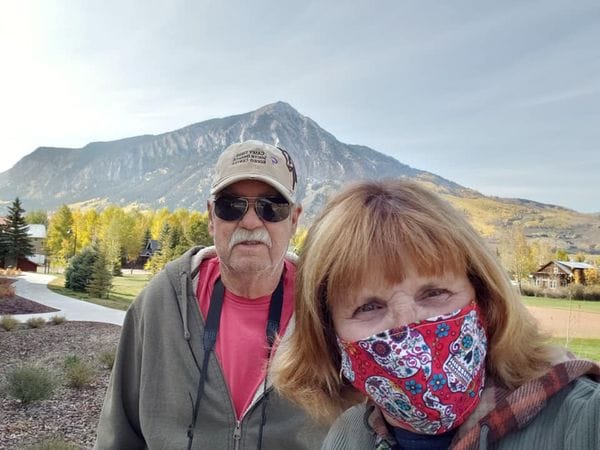





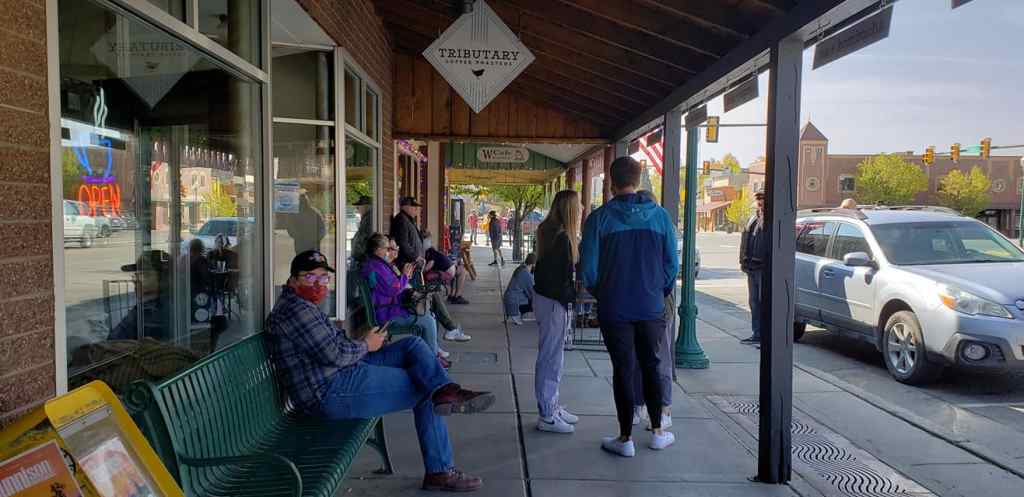



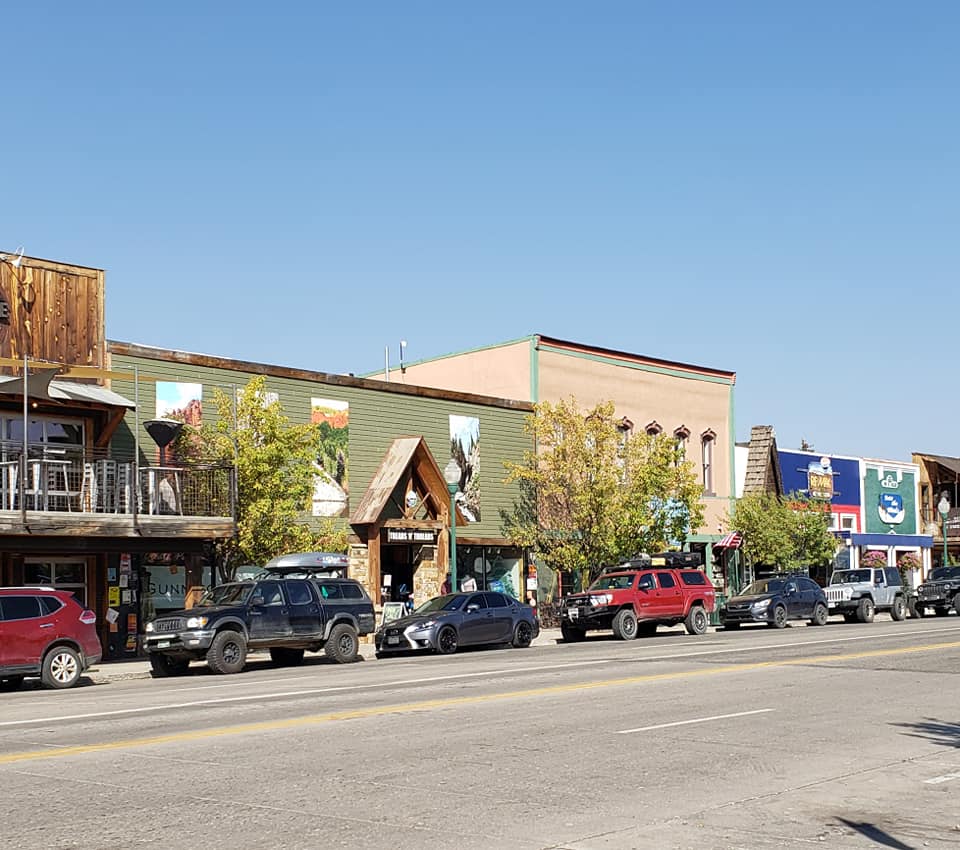





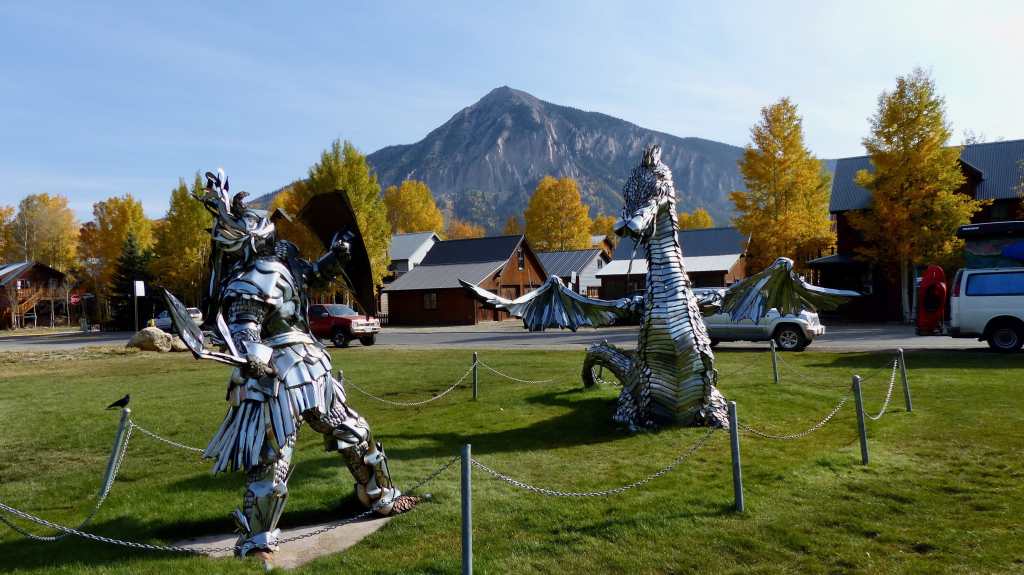





What a great area to explore!
LikeLike
Yep!
LikeLike